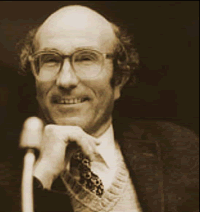Introduction to Niklas Luhmann
(German sociologist and systems theoretic, 1927-1998)

For ongoing students of art encountering the thought work of Niklas Luhmann will forever change the perception and treatment of art communication and form observation, essentially that which entails form and meaning in a painting or drawing. In any case Luhmann’s theory of dynamic systems is sure to reveal new navigation paths for deconstructing art’s actuality, or how art communicates in the construction of the present. His position on the working dynamics of communication also offers noteworthy designs towards coping with the radical and fast-developing complexities of information in the onslaught of daily life. In addition his overall concepts on communication might add new scope as to how units in a society can be loosely coupled throughout their evolution, forever establishing new interfaces, which can forever lead to misunderstandings, or understandings, or to productive or non-productive partnerships. For the artist, proceeding on such notes in painting could easily relate how a picture’s complex form interaction is created, and how observed couplings of any combinations of forms can be seen to entail meaning.
The theory behind Niklas Luhmann’s literary legacy is indeed complex whose abstract groundwork is not anything for quick and entertaining reading. Most significant, the reader becomes a part of the very process, in which he immerses himself, to relay a sense of self-worth and self-identification in the process of observing. Understanding the basics of these dynamics will surely open new horizons while suggesting additional means towards effectively shaping ones so-called future.
Consider the following instance: A person might buy a cell phone and a fax machine to handle a greater number of incoming requests, reduce stress, and thus gain time for other projects. It seems contradictory that the same device might be turned off at times so as to avoid having to address situations, moments which can’t be assessed anyway until they’re observed – of people demanding information, answers, precious time, and even money. Nonetheless the complexity of relentless decision-making and its potential consequence can be met with a kind of time management, which observes possible outcomes when coupling factors and considering relationships. This assists tremendously in reducing life’s so-called “noise” and increasing the meaningful relevance behind the onslaught of mere irrelevant pieces of information. Indeed, organization, and process guidance are key focal points in the paradigm of Luhmann’s theory on communication – a particularly interesting dimension to explore for “alla prima” artists!
Luhmann himself exemplified the viability of his systems concept with the huge base of information he compiled throughout his lifetime. As his library of knowledge grew, so did the self-organization of his thought work. And this he did in order that the new dimension of his amassed collections of knowledge would continue to make sense, despite their complexity. Absorbing impulses non-stop and adding continuously to his theory of cognition he developed a dynamic system, which enabled him not only to organize his own information, but also to observe its compound relevance. Concepts such as globalization, society, love or meaning take on new significance as observed in the context of his designs on form differences.
To be sure, Luhmann’s postulates will never suffice the paradigms of the old European order, one that has already waned far beyond its prime, and in some instances still seeks to restoratively retain what influence it once had on describing the evolution of society, and which it sometimes believes it might still do (compare also emerging Eastern European societies). For more than 10 years the effects of Luhmann's prescribed paradigm-shift have increasingly been the focus of attention particularly in the sectors of industry, commerce, religion, and education (compare Germany society before and after 1989).
Not only in order to observe a changing world, but to be a part of that change, it’s necessary to cope with the relationship of the involved components, then learn to make choices and proceed as if everything were certain, knowing always that all one can do is try to stay in the game; then wait and see all over again. That’s why it always pays to stay interested, skeptical, or curious, on the way to becoming a refined observer. Again, through the act of observation Luhmann reintroduced the moment of self-esteem into system as one who observes the self-determination of social systems, and thus is able to make choices in a confronting ones environment.
To this ends he ingeniously fused his own theoretical foundation of communication with a concept of the Chilean biologists Francesco Valera and Humberto Maturana known as AUTOPOIESIS, which illustrates how living organisms self determine their adaptation to their surroundings should they continue to survive and evolve. In simple terms, by then introducing the concept of autopoiesis into his theory of communication Luhmann was able to explain how individuals can recognize themselves and their doings in the act of observing, and in so doing, proceed to make choices for their lives, and moreover, in a life oscillating between environment and consciousness.
Only a generation after Luhmann laid his foundation western society is gradually absorbing and applying Luhmann's concepts, not just in academic circles, but also in the fields of industry, law, informatics, psychology, and culture. With such impressive credentials it would surprise the reader to know that Luhmann was a non-pretentious, sensitive, and open-minded person, who was swift to open himself to the world and interactions of people about him. His quick-witted, at times dry humor always seemed to encompass the paradox of his observation - then again, that is, more than likely, the element, which deems us all human.
Frederick D. Bunsen
September 2002, Cluj-Napoca, Romania
Professor of Art Communication and Systems Theory
University of Art and Design Cluj-Napoca